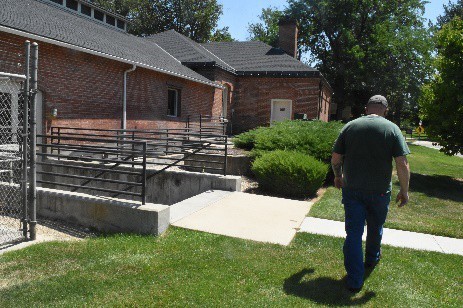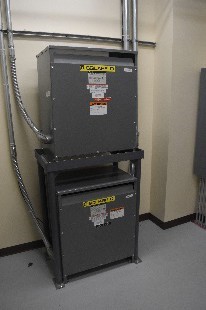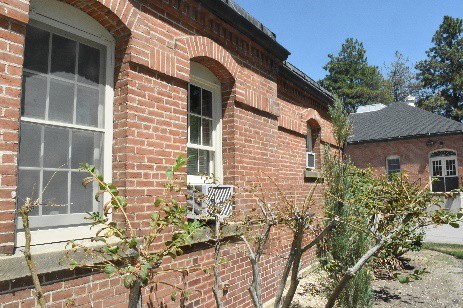Architecture Engineering Environment
VISN 20 Facility Condition Assessments Facility Condition Assessments, AK, ID, OR & WA
Project Scope
Facility Condition Assessments (FCAs) are the backbone of the VA sustainment program. Focus for these assessments is centered around evaluating capital assets. All facilities owned by the VA and some leased properties are historically inspected every three (3) to four (4) years for their condition. The VA engaged ATEI initially in 2017 upon award of the basic IDIQ contract and has continued selecting us for successive task orders for five (5) VISNs and the National Cemetery Association Pacific District Network (MSN 5). ATEI used a variety of our teaming partners for these taskings. ATEI’s core team remains intact and continues to refine the process.
The VA standard for conducting assessments (FCA 101, dated 2019) requires the use of disciplines of Architect, Mechanical, Structural, Electrical and Civil engineers as well as specialty services of a Qualified Elevator Inspector and experienced cost estimator. In addition, the ATEI process relies on the experience of a senior project manager (PM), a quality assurance manager and several data entry clerks. The senior PM is responsible for schedule compliance, orchestrating the activities of the team, and liaising with the VA at all levels.
ATEI’s experience conducting assessments precedes the 2017 contract. The principal of ATEI, with maintenance and engineering background beginning in 1977, translated that expertise to doing formal assessments on or around 2005. Leading up to the VA IDIQ contract, ATEI conducted assessments of facilities ranging from oil field units to General Officer Quarters, Family Housing, and Enlisted Dormitories at 84 military installations and eight (8) countries around the globe. Since 2017, ATEI has conducted assessments using the DoD assessment program known as Builder SMS. This added assessment of secure facilities to our experience base. Over the course of various assessments, ATEI has developed an approach that optimizes time in the field and reduces the total number of days needed to conduct assessments. In our current work for VISNs 1 & 21 this approach reduces total field time by over a week and total person days by around 40.
To better serve the VA, ATEI suggested, and the suggestion was accepted, that the cost estimator remain in the office and send a Civil engineer to the field to better parse the work. Additionally, ATEI is using flexible site staffing where warranted. Pre-assessment we evaluate existing assessment records to determine how long each discipline is needed on each location.
Considerations include: 1) total number of buildings, 2) age and renovation history, 3) historical classification, 4) discrepancy density, and 5) total discrepancies.
The total time suggested by the VA is considered when planning each tasking. In accordance with ATEI’s objective of keeping the disruption of the facility’s primary mission to a minimum; we set a minimum of three days and maximum of 10 working days for the site visit at any given facility. The minimum, while flexible for extremely small facilities, is the mostly impacted by the startup and wrap up. When combined, these functions typically consume one full day. So actual assessment time is two days for small stations. At the maximum, we limit our field time to two weeks. This is achieved by adding staff, when warranted as mentioned above. Additionally, when a structural engineer is not specifically needed, the Civil engineer assumes the Structural engineer’s duties. This approach leverages the Civil discipline and reduces site visit labor and expenses.
On the data collection and processing side, ATEI has taken many steps to obtain, secure, and preserve the data for evaluation. Since the VA process is not automated, our team uses the philosophy of when in doubt, collect the data. Pictures and notes not used preferable to a missed opportunity and the expenses outweigh returning to a station. Reconciling the database is a separate challenge faced by our assessors and database team. As the FCA process has evolved to fundamentally, one item/one record, we see a growth of 10-15% in the total number of records. We are also focused on providing better specificity to the records by adding floors, room numbers, and makes, models and serial numbers to each record as applicable.
Through VISNs 22, 20, 16, 1, & 21 plus the National Cemetery Association Pacific District Network (MSN 5), we have assessed some 65,000 recorded items, 750 buildings, 2,400 objects, totaling over 44 million square feet. We have added roughly 5-15% to the total discrepancy value by VISN / District raising the total from $4.5B to $5B while removing all completed items and duplicate entries in the case of the National Cemetery Association Pacific District Network (MSN 5), ATEI integrated an update of their GIS mapping into the FCA process.
Project Owner: U. S. Department of Veteran Affairs
Project Relevance:
- VA Experience
- Facility Assessment
- Capital Asset Inventory

ATI has been supporting federal, private sector and municipal clients for over 25 years.
Ed
My interest in the environment and sensor technology drove our initial environmental geophysics business start-up. Since then we have expanded to offer full engineering services.
Mac
I watched ATI grow up from the sidelines and was excited to expand the Environmental team to a full-service all hazards consultancy.
Betrece & Victoria
Our team bridges science and service by understanding the organizational challenges legacy agencies face and help them to interpret the changing regulatory landscape.


